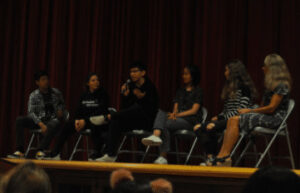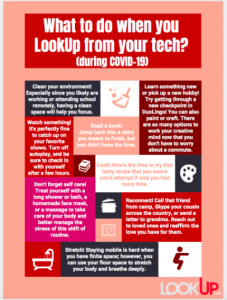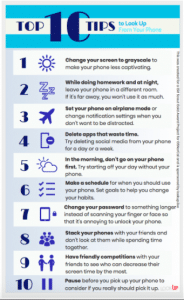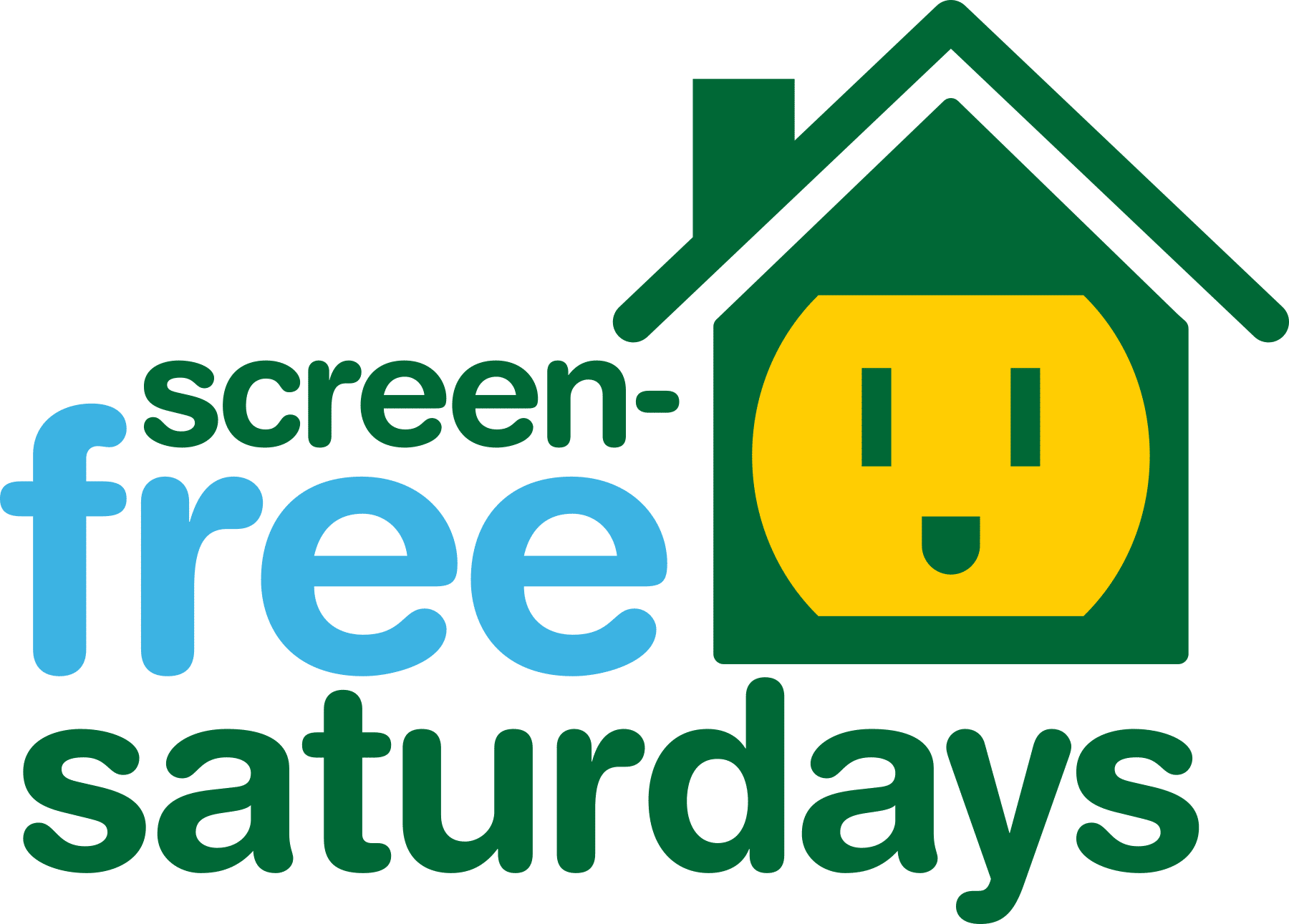In this guest blog, high school student, Haydn Wolfers, shares her experience with her own digital wellness and how she’s spread knowledge about tech use to not only her peers, but also elementary schoolers who are just beginning to develop their digital health habits.
I asked my classmate what she did over the weekend and if she studied for our math test. No, she said, she knew she needed to study, but she went on her phone and lost track of time.
I’ve heard this so many times. My generation is one of the first to have cell phones and technology as such a large part of our lives and the problems this causes are not being addressed. I see this everywhere I look: from myself, to my classmates, to the kids I babysit.
I became aware of this issue during my sophomore year of high school when Susan Reynolds from LookUp.live (then called Mindhood) visited my school to present about Digital Wellness. She shared how unhealthy habits with phones impact mental health and how prevalent this problem is. Until this point, I hadn’t realized how our phones can make such a negative impact on our lives.

Haydn Wolfers (second from right) and Susan Reynolds of LookUp.live (far right) speaking on a panel about teenagers’ habits with technology
This led me to start the first LookUp Club with some friends. Our goal was to raise awareness about Digital Wellness in our high school and having a healthy tech/life balance. We wanted to help our peers (as well as ourselves) develop healthier habits. We hosted some of the first LookUp Challenges at our school.
DID YOU KNOW?: LookUp Challenges occur when students invite their friends, family and community to take a break from social media and digital distraction TOGETHER for a week. Recently, Screen-Free Week hosted a week-long LookUp Challenges, beginning with Screen-Free Saturday on July 18th, with ideas for digital wellness for elementary, middle, and high schoolers inspired by the work of students like Haydn. Check it out at www.screenfree.org/look-up-challenge!
At lunchtime, we set up a table that our classmates would stop by to learn about the variety of options they could choose from to challenge themselves to change their habits. For example, they were encouraged to sleep with their phone outside their room (Sleeping Dog) or take a break from their phone while studying (Busy Bee). It can be very difficult to change habits, but we found that it’s much easier when everyone is doing it together and supporting each other.

One of Haydn’s resources for the LookUp Club!
When I began to work on my Girl Scout Gold Award Project during my junior year, I wanted to continue to address this issue, but from a new angle. I decided to focus on teaching upper-elementary students about Digital Wellness! I hoped that if they were aware of the issues before they developed too many bad habits, they wouldn’t have to try to change these habits later.
I developed a lesson for them, similar to what Susan Reynolds taught my class, but targeted at a much younger age. The lesson consisted of watching a video about teenagers’ relationships with their phones, so the children could become aware of the issue. Next we discussed their reactions, experiences, and tips to improve habits in the future. Tips included not being on their phones while with friends and being aware that what’s posted on social media isn’t the reality. The 5th graders I visited were not aware of how problematic phones can become and were very interested in learning about it. We finished the lesson by decorating small burlap sacks to become “Phone Sleeping Bags,” which would serve as an extra reminder for them to not use their phones when they shouldn’t, as well as to remind them of what they learned in the lesson.

Haydn’s infographic “Top 10 Tips to Look Up from Your Phone”
Unfortunately, after visiting only two classrooms, the coronavirus hit and my plan to visit classrooms could not continue. However, I didn’t want to stop spreading the message because it’s more important while quarantining than ever, as everyone is spending so much time using technology. To continue spreading the message, I made infographics and spoke on several virtual panels to share my perspective.
Once it became clear that school wouldn’t open back up for a while, I decided to convert the lesson I had made to become virtual, because I still wanted the students to learn about this important topic. My lesson now consists of the same short video I showed in class, with questions to be filled out in a google form. The lesson can be done as a family or class by discussing the questions, or it can be completed individually through personal reflection. Although I think the lesson is not as impactful when it is not in person, now that it is virtual it can reach a wider audience of kids all over the country, instead of only in my school district.
I’m so glad that I’ve learned about digital wellness. It is extremely important in our lives, yet it does not receive the attention it deserves. My own tech/life balance has improved immensely as I’ve been spreading the message to others. I hope that I can continue to improve and help others become aware of the importance of developing healthy habits with technology and learn how to do so.
 About the Author
About the Author
Haydn Wolfers is a rising senior in Piedmont, California. She is a founder of her school’s LookUp club addressing digital wellness amongst her peers. She is a dedicated Girl Scout working on her Gold Award Project. Additionally, she is on the LookUp Youth Leadership Council.

Want more strategies for building digital wellness? Take our pledge to learn about Screen-Free Saturdays and solutions like Haydn’s through our monthly e-mails! They are full of activities, resources, and inspiration.
